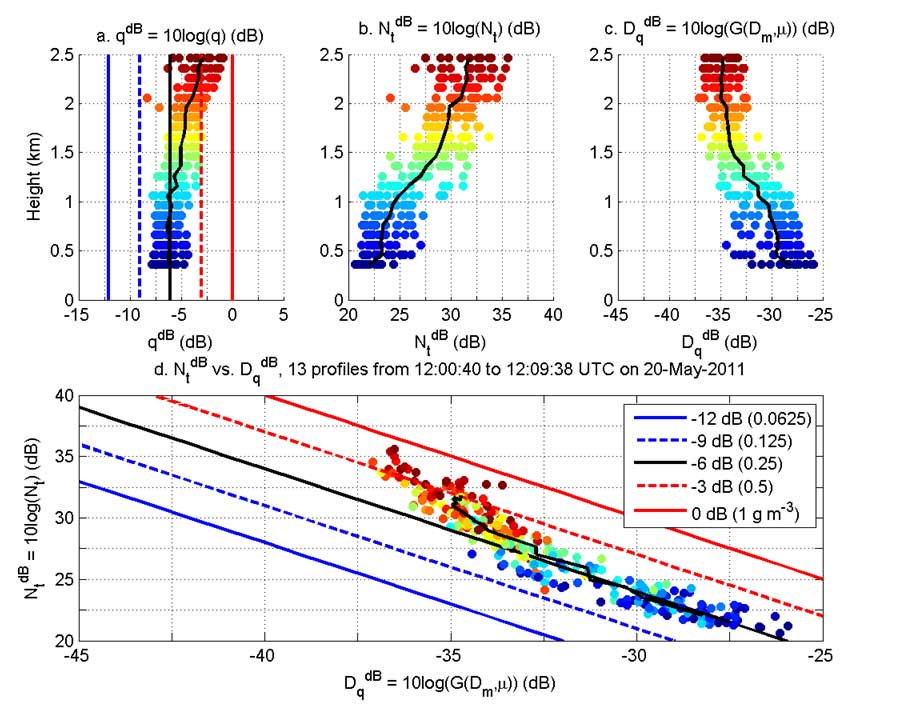Diagnosing Raindrop Evaporation, Breakup, and Coalescence in Vertical Radar Observations
Submitter:
Williams, Christopher R — University of Colorado Boulder
Area of research:
Cloud Processes
Journal Reference:
Science
In our quest to better understand precipitating cloud systems, we must realize that radars do not directly observe microphysical processes. Rather, radars observe raindrops and the changes in the number and size of those observed raindrops over time and space provide us with clues to the microphysical processes acting upon those raindrops. Thus, evaporation and accretion will appear as the subtraction or addition of mass to the observed raindrop size distribution over time and space, while breakup and coalescence will appear as modifications of how liquid is distributed between different-sized raindrops.
Impact
To help identify and isolate mass-modifying processes from size-modifying processes, Williams (2016) introduced vertical decomposition diagrams (VDDs) that express rainfall parameters in logarithmic units so that liquid water content (LWC) is a linear combination of the total number of raindrops (Nt) and the characteristic raindrop size (Dq). This formulation allows evaporation and accretion processes to be directly estimated from changes in LWC with height, and breakup and coalescence processes to be estimated from changes in Nt and Dq.
Summary
During a MC3E stratiform rain event (20 May, 2011), LWC vertical decomposition diagrams (LWC-VDDs) indicated signatures of net evaporation and net raindrop coalescence as the raindrops fell a distance of 2 km below a well-defined radar bright band. In summary, the LWC-VDD is a tool to characterize rain microphysics with quantities related to mass-modifying, number-modifying, and size-modifying processes.


